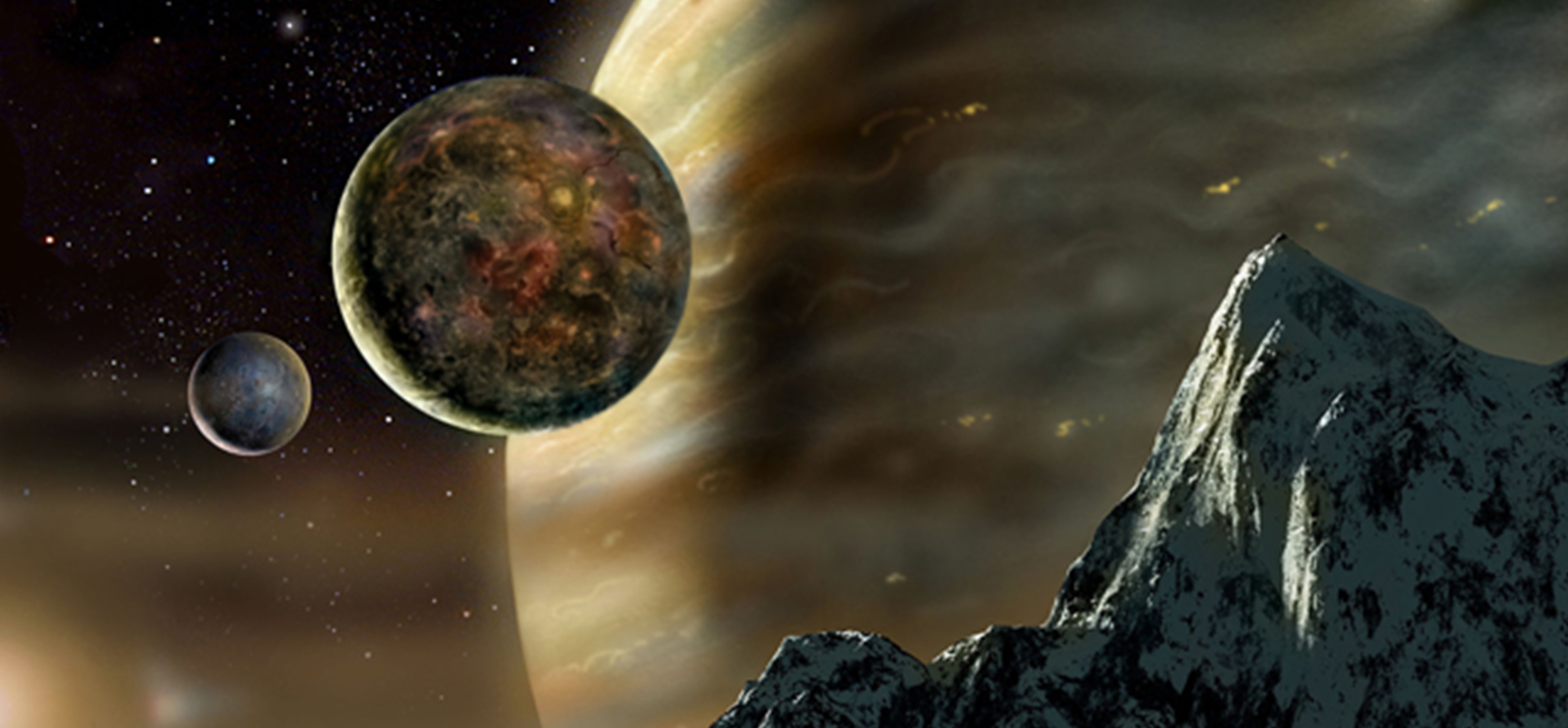
(Artist rendering courtesy NASA)
UChicago scientists are looking above and beyond to determine our place in the universe.
Scientists and science-fiction authors alike long theorized that planets beyond Earth’s solar system orbited other stars; it stood to reason that if our ordinary, unremarkable sun had planets, then so should many other stars. Now, in less than two decades, the existence of extrasolar planets, or exoplanets, has gone from speculation to scientific fact. Scientists have identified close to 600 exoplanets, and UChicago is joining the search for more.
Many astronomers dream of detecting an Earth-sized planet in the habitable zone, an orbit that’s an appropriate distance from its parent star for liquid water to exist on the surface, believed essential for life. In December NASA announced the possible discovery of one such world, but most of the planets found so far, both by large ground-based telescopes and space missions such as the Spitzer Space Telescope and Kepler, don’t qualify. They’re either gas giants (too large to be a rocky planet like Earth), orbiting too close to their sun (too hot to have liquid water), or both, and thus incapable of supporting life—at least, any sort of life that we can conceive.
“It is a basic desire of humanity to want to understand our origins and place in the universe,” says Jacob Bean, who joined the University in the fall as an assistant professor of astronomy and astrophysics. “The study of extrasolar planets is one of the best ways to seek further knowledge in this area.” Bean’s research focuses on low-mass stars. Using current methods, he explains, a small planet similar to Earth is easier to detect around a small faint star because a large bright star’s light would overwhelm it. In addition, “low-mass stars are the most numerous type of stars in our galaxy. Taking the census of planets around these stars is an important component of understanding the overall planet population.”
Another exoplanet researcher—Daniel Fabrycky—will join Chicago’s astronomers next fall. Fabrycky, now a Hubble postdoctoral fellow at the University of California, Santa Cruz, uses data from the Kepler planet-hunting satellite to study the exoplanets’ dynamics and orbital mechanics, particularly in solar systems with more than one planet orbiting the same star. “We’d like to know if our arrangement of planets here [in our solar system] is a fluke or is very common,” he says. “The only way to find out is go look for other ones.”
Bean and Fabrycky won’t be alone studying planetary science at Chicago, points out geophysical sciences chair Michael Foote, SM’88, PhD’89. “Their research complements ongoing work on planetary atmospheres and the origin and evolution of planetary systems.” For instance, Dorian Abbot, assistant professor of geophysical sciences, published a paper (pdf) in Astrophysical Journal Letters last July with then postdoctoral researcher Eric Switzer, AB’03, about the possibility of “Steppenwolf planets”—planets hurtling through interstellar space “like a lone wolf wandering the galactic steppe,” as Abbot and Switzer put it—that might support life under an insulating ocean of ice. Assistant professor of geophysical sciences Fred Ciesla is building computer models of protoplanetary disks, the loose agglomeration of material that surrounds a star in its earliest days, to determine what physical properties cause planetary systems to form.
Chicago’s new focus on exoplanets stems in part from its commitment to “big glass,” says astronomy and astrophysics chair Rocky Kolb, referring to the University’s commitment to the 6.5-meter Magellan Telescopes in Chile and their successor, the 24.5-meter Giant Magellan Telescope. Once complete in 2019, the telescope should be powerful enough to detect Earth-sized planets in the habitable zones around sun-like stars. Future telescopes and satellite missions should be able to discern not just where the Earth-like planets are but also the kind of climate they have, the composition of their atmospheres, and perhaps even the gaseous signatures of life. Detecting life on other worlds would be a major advance for biochemistry and evolutionary biology, among other fields, and, as Fabrycky says, “that ‘gee-whiz’ factor can’t be underestimated.”
